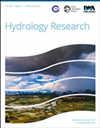有机污染导致的海底河流生物膜中的多菌转移——一种新的生物大陆的前景?
IF 2.4
4区 环境科学与生态学
Q2 Environmental Science
引用次数: 0
摘要
有机污染继续污染河水,使世界各地的水生生态系统退化。在高有机负荷的重度改性河流系统中,污水真菌,一种异养生物膜,可以在河床上形成。本研究的目的是确定在污水真菌爆发之前和期间,河床生物膜的多菌群落是如何变化的,为开发新的生物监测方法提供信息。根据BACI设计,从之前经历过污水真菌爆发和上游控制的地点收集河床生物膜样本。使用靶向扩增子测序(16s rRNA)对多细菌群落进行了表征。结果表明,在污水真菌爆发之前和爆发期间,该群落由Rhodoferax和Sphaerotilus两个属主导,分别占相对丰度的32.8%和14.2%。当在更高的分类学水平上聚集时,遗传数据显示,该群落主要由来自单科Comamonadaceae的细菌组成,总丰度为相对丰度的64.1%。随着时间的推移以及影响点和控制点之间多菌群落的统计显著差异提供了初步证据,表明基于基因的指纹图谱可能是一种很有前途的生物检测方法,可以识别有机污染输入并监测其生态影响。本文章由计算机程序翻译,如有差异,请以英文原文为准。
Polybacterial shift in benthic river biofilms attributed to organic pollution – a prospect of a new biosentinel?
Organic pollution continues to contaminate river water and degrade aquatic ecosystems worldwide. In heavily modified river systems with high organic loading, sewage fungus, a heterotrophic biofilm, can form on the riverbed. The aim of this study was to determine how the polybacterial community of riverbed biofilms changes prior to and during a sewage fungus outbreak to inform the development of novel biomonitoring approaches. Riverbed biofilm samples were collected from a site that experienced sewage fungus outbreaks previously and an upstream control, following a BACI design. The polybacterial community was characterized using targeted amplicon sequencing (16s rRNA). The results indicate that the community became dominated by two genera prior to and during the sewage fungus outbreak, Rhodoferax and Sphaerotilus, which accounted for 32.8 and 14.2% of the relative abundance. When aggregated at a higher taxonomic level, the genetic data show that the community was comprised largely of bacteria from a single family, Comamonadaceae, totalling 64.1% of the relative abundance. Statistically significant differences in the polybacterial community over time and between impact and control sites provide initial evidence that genetic-based fingerprinting could be a promising biosentinel approach to identify organic pollution inputs and monitor their ecological impact.
求助全文
通过发布文献求助,成功后即可免费获取论文全文。
去求助
来源期刊

Hydrology Research
Environmental Science-Water Science and Technology
CiteScore
5.30
自引率
7.40%
发文量
70
审稿时长
17 weeks
期刊介绍:
Hydrology Research provides international coverage on all aspects of hydrology in its widest sense, and welcomes the submission of papers from across the subject. While emphasis is placed on studies of the hydrological cycle, the Journal also covers the physics and chemistry of water. Hydrology Research is intended to be a link between basic hydrological research and the practical application of scientific results within the broad field of water management.
 求助内容:
求助内容: 应助结果提醒方式:
应助结果提醒方式:


